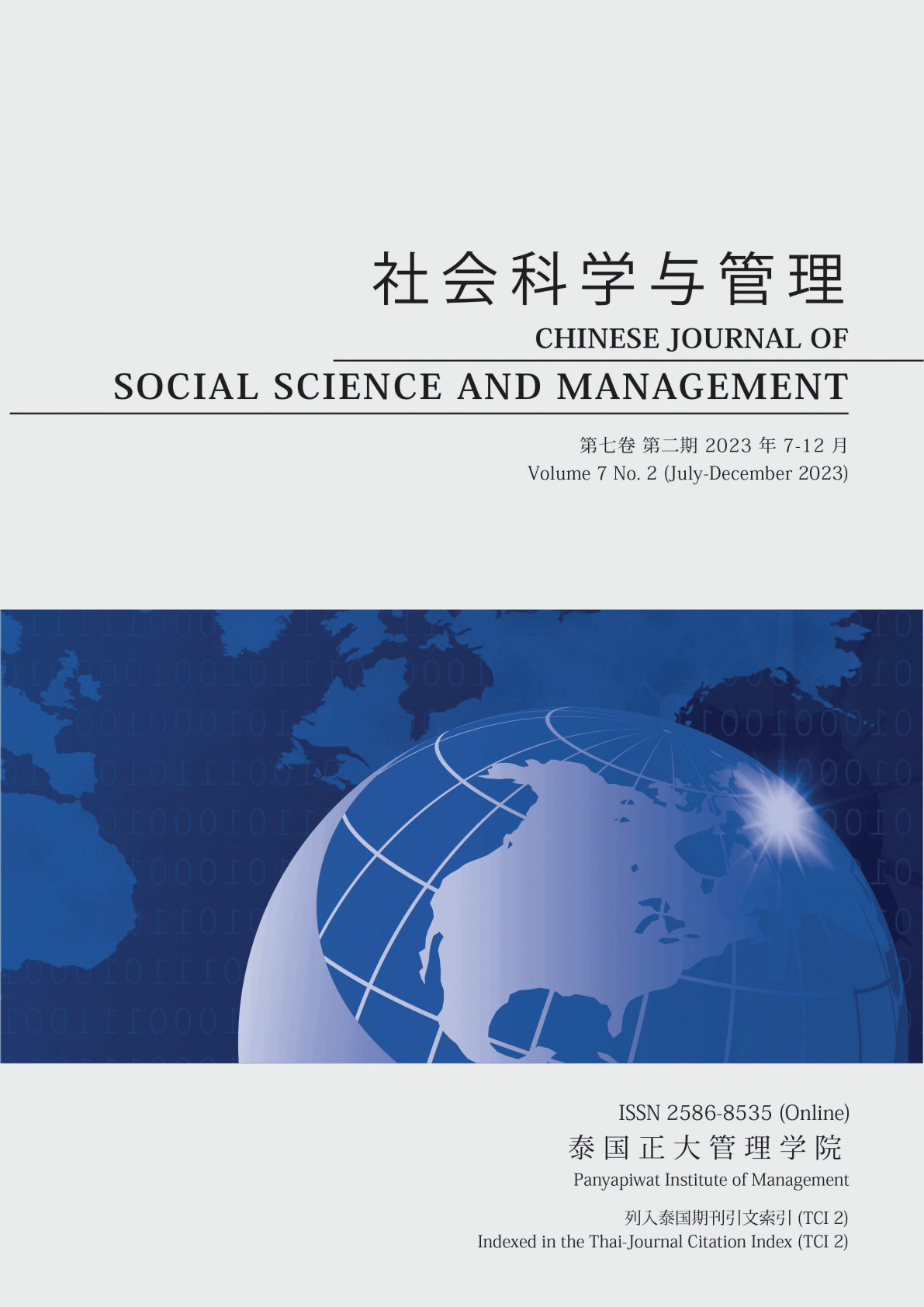THE STUDY OF CHINESE BUDDHISM’S FUNDAMENTAL DOCTRINE:THE INHERITANCE AND DEVELOPMENT OF MADHYAMAKĀ
Main Article Content
Abstract
Chinese Mahayana Buddhism is based on the theory of The Middle Concept, which was originated by Nāgārjuna Bodhisattva, who is highly esteemed within Mahayana Buddhism in China. Both the Han-dominated Exoteric Buddhism and the Tibetan-dominated Tibetan Buddhism are based on Nāgārjuna Bodhisattva’s Madhyamakā thought. Therefore, Nāgārjuna Bodhisattva is known as the “the Ancestor of the Eight Buddhist Schools” in Chinese Buddhism, and the Chinese Buddhist community regards him as “Nāgārjuna Bodhisattva” or “Arya-nāgārjuna”, which shows his important position in the hearts of Buddhists. Nāgārjuna Bodhisattva’s Madhyamakā thought integrates the doctrines of the Prajnaparamita Sutra and also led to the creation of the Madhyamakā School. Among them, the ideology that “all is empty”, which is the concept that all existence is a construction of name and speech as opposed to the ideology of a corresponding self, is not only regarded as the theoretical basis of Mahayana Buddhism in China but also influenced the development of all schools of Buddhism in later generations and provided its own contribution to the history of human thought. As a result, Chinese Buddhism formed a system of belief that differs from Indian Buddhism based on Madhyamakā Thought, which cannot be separated from the inheritance of the Madhyamakā School. On the basis of historical and documentary materials, this paper clearly explains the inheritance of the Madhyamakā School in Chinese Buddhism, in order to allow readers to understand the legacy and development of the Madhyamakā School.
Article Details

This work is licensed under a Creative Commons Attribution-NonCommercial-NoDerivatives 4.0 International License.
Chinese Journal of Social Science and Management Editorial Division
The Office of Research and Development, Panyapiwat Institute of Management
85/1 Moo 2, Chaengwattana Rd., Bang Talat, Pakkred, Nonthaburi 11120, Thailand
Tel. 02 855 01048 E-mail: cjssm@pim.ac.th
References
Daozheng, Z. (2012). Three discussions on the inheritance of teachers’ qualifications. The Buddhist Academy of China. http://t.hk.uy/aTXv [in Chinese]
Dong, Q. (2017). The three ancestral families of Sanlunzong and the three developmental stages of Sanlunzong thought. The Voice of Dharma, (2), 30-36. [in Chinese]
Li, Y. R. (2014). Inheritance of the patriarch of the Madhyamaka school. Wu Ming Buddhist Network. https://t.hk.uy/aTXm [in Chinese]
Ren, J. Y. (2016). History of Madhyamika Buddhism. China Social Sciences Press. [in Chinese]
Takakusu, J. (1934). The Taisho Shinshu Daizokyo. Taisho Shinshu Daizokyo Kanko Kai Publisher. [in Chinese]
The Buddhist Association of China. (2016). Sanlun sect. https://t.hk.uy/aTXt [in Chinese]
Ye, S. Y. (2019). Madhyamika praises. Zhongxi Book Company. [in Chinese]
Yin, S. (2010). The present discourse. Zhonghua Book Company. [in Chinese]
Yin, S. (2019). On the Madhyamika. Zhonghua Book Company. [in Chinese]
Zhang, K. Y. (2015). A review of domestic research on Kumarajiva since 1995. Journal of Handan College, 25(1), 107-166. [in Chinese]


